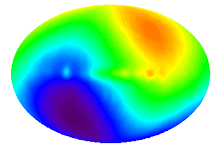Axes of host gut
microbiota metabolic interactions.
A host-microbe
metabolic axis can be defined as a multidirectional interactive chemical
communication highway between specific host cellular pathways and a series of
microbial species, sub-ecologies, and activities. Examples of such axes include
bile acid production, where bile acids metabolized by gut microbes, especially
lactobacilli, bind to host nuclear receptors involved in a variety of cellular
processes. The endocannabinoid system is modulated by microbially generated
molecules such as lipopolysaccharide that alter gut permeability and signaling
to the brain. The aromatic acid axis links metabolically active molecules such
as cresols and amines (which are vasopressors) generated by colon microbes like
clostridia to the host’s ability to sulfate drugs such as acetaminophen.
Short-chain fatty acids such as n-butyrate
(formed from gut fermentation of complex carbohydrates in the proximal colon)
provide an energy source for colon microbes but are also pharmacologically
active, inducing angiogenesis in the gut mucosa. A diverse range of
neurochemically active species (neurotransmitter axis) are produced by gut
microbes ranging from γ-aminobutyrate to hydrogen sulfide and other
gasotransmitters, which modulate ion transport and the enteric nervous system
locally in the gut. The microbial-specific conversion of dietary choline to
trimethylamine can also generate potentially toxic species that have been
associated with atherogenesis and nonalcoholic fatty liver disease in mice.
Collectively, these notional host-microbe metabolic axes provide potential
targets for therapeutic intervention at different stages in life.

沒有留言:
張貼留言